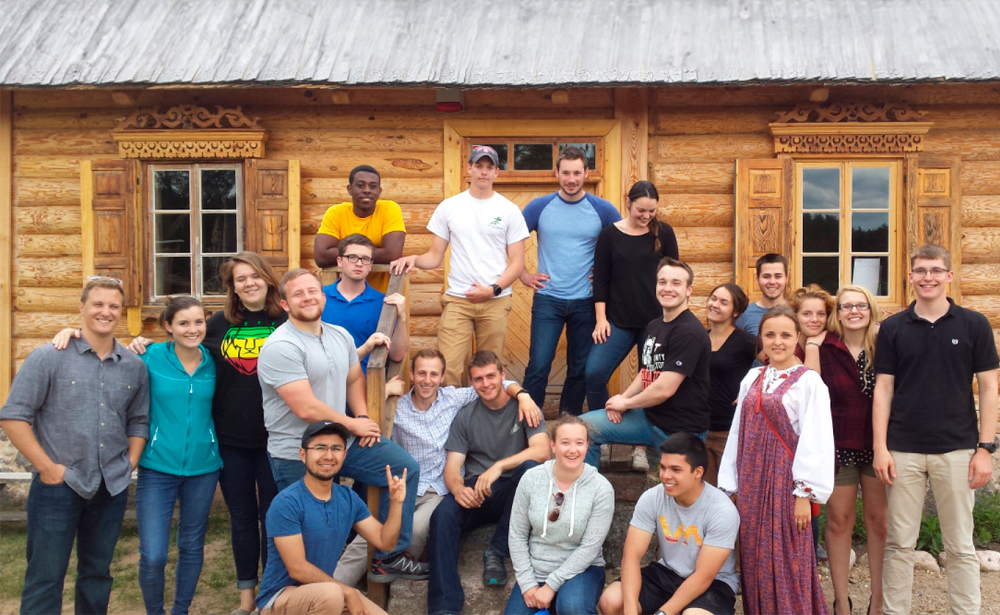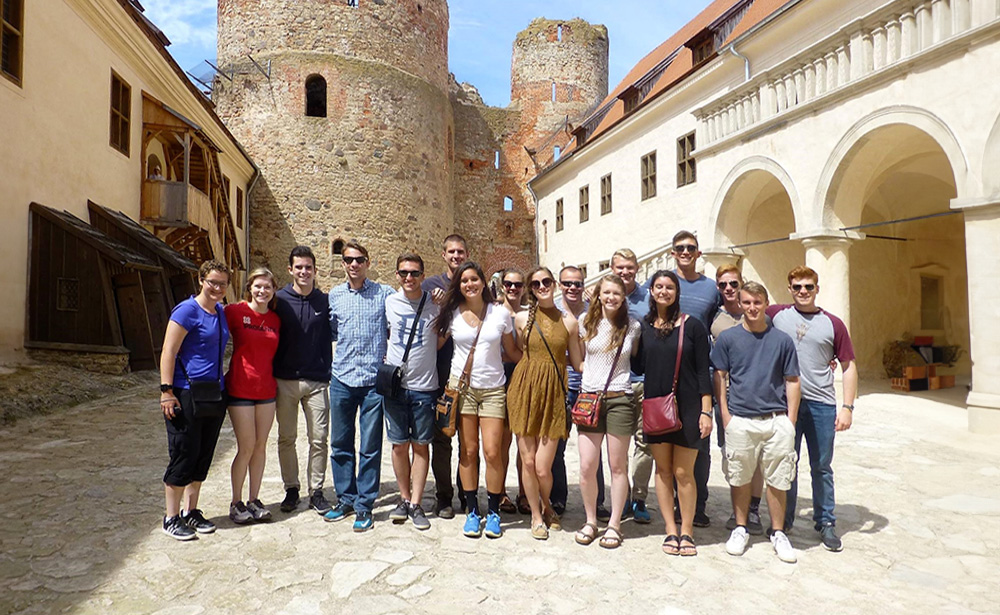Russian Games
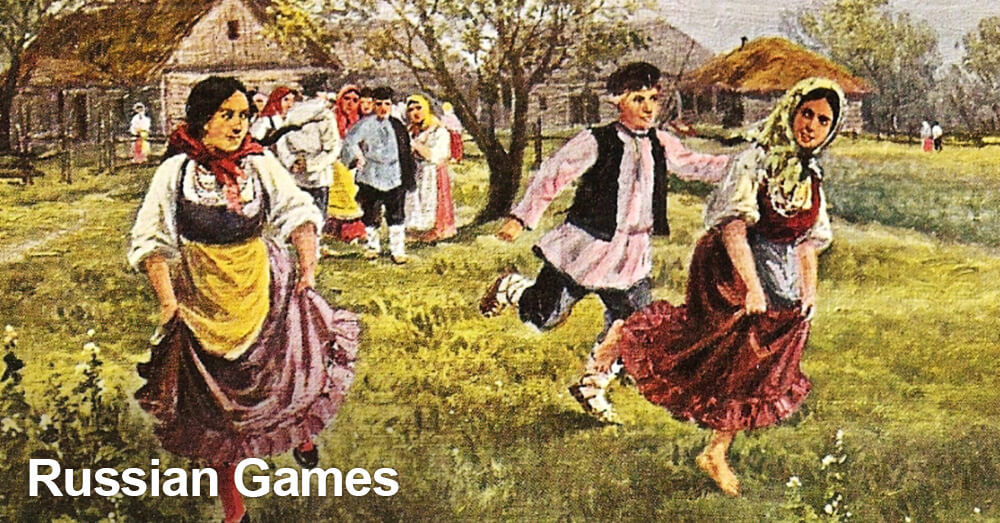
Games that determined a person’s character, temper, and lifestyle occupied a special and significant place in the culture of each nation. For many years, Russian games have been an integral part of everyday life, as well as part of entertainment during holidays for both children and adults.
People used to play games so to have fun and spend their time in an interesting way. During playing games, children from their early age learned to be agile, enduring, and hardworking. Through games, they developed logic and perseverance. Majority of games were played outdoors, which helped develop physical abilities. All Russian games were different. Both kids and adults could take part in them.
Russian Games:
Babki
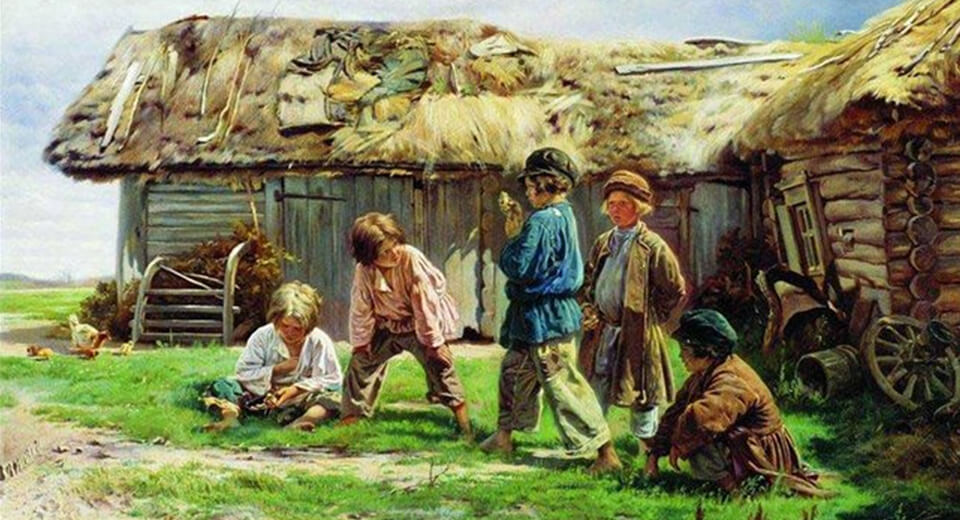
Game “Babki” is an old Russian game in which the bones of hoofed joint of animals (cows, pigs, sheep) were used as dice. A large number of children could take part in this game. The playing field was drawn on a flat surface; the bones, which had to be knocked out with a bat, were placed in a special window in a certain order. This fascinating game improved the skill of throwing, as well as developed strength, speed, and attention.
Lapta

“Lapta” is a team bat-and-ball game. It is played outdoors on a rectangular field. The pitcher serves the ball, and the hitter uses the bat to hit the ball, then run across the field and back. The opposite team’s task is to catch the ball and launch it at the hitter before he or she has finished running. Each run completed without being hit earns points for the team. This game developed children’s agility and attention.
Gorodki
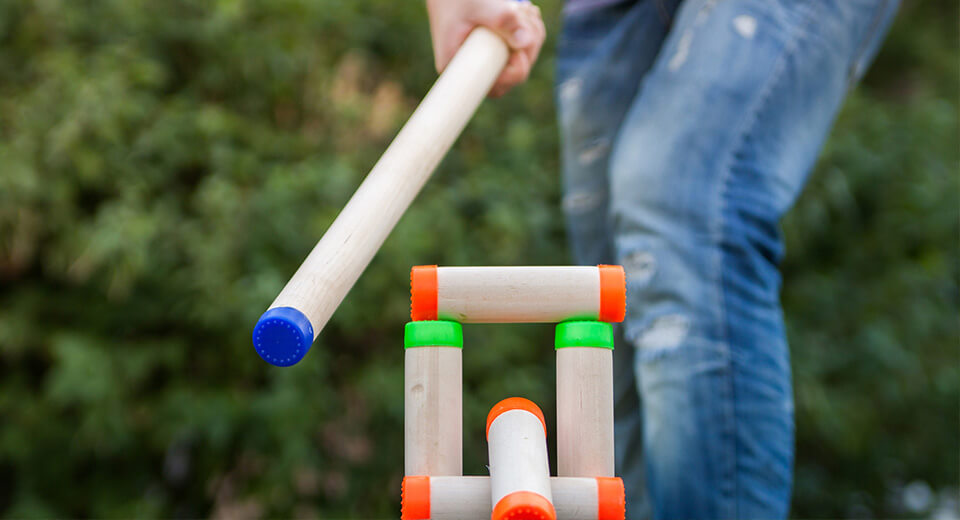
The aim of the game is using the bat to knock 15 wooden pins that are put at a certain distance, in as few throws as possible. Each pin has its name and place on the playground. You can play this game individually or as a team. In this exciting game each player needs agility, strength, and accuracy.
Rucheek

In old days, young people could not imagine any holiday without the game “Rucheek”. The game began with all the participants made pairs standing one after another and raised their hands up, thus forming a corridor. The player who was left without a pair had to go inside the corridor and break the pair, choosing a partner. Then a newly made pair had to go to the end of the corridor, but the one who was left alone had to go to inside the corridor and choose a new partner. The more people participated the more fun it was.
Gorelki
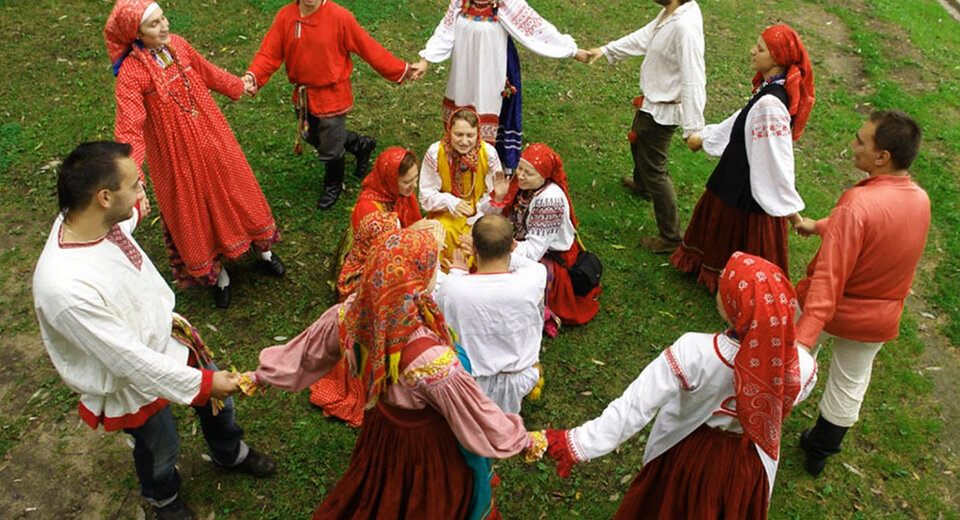
“Gorelki” is a traditional active Russian game that it meant to develop both speed and attention. At the beginning of the game, all players are divided into pairs and stand in columns. One player (it) stands about ten feet in front of the pairs, facing away from them. There is a line drawn. Then all participants of the game sing the song “Gori-gori yasno”, and at the end of the song when they say the word “run” a pair split up and run to the line. The lead player (it) has to grab one person from the pair before they grab their hands in front of the line. After that, the lead player (it) makes a pair with one of the persons caught, and the partner, who is left alone, becomes the next lead player.
“Pryatki”
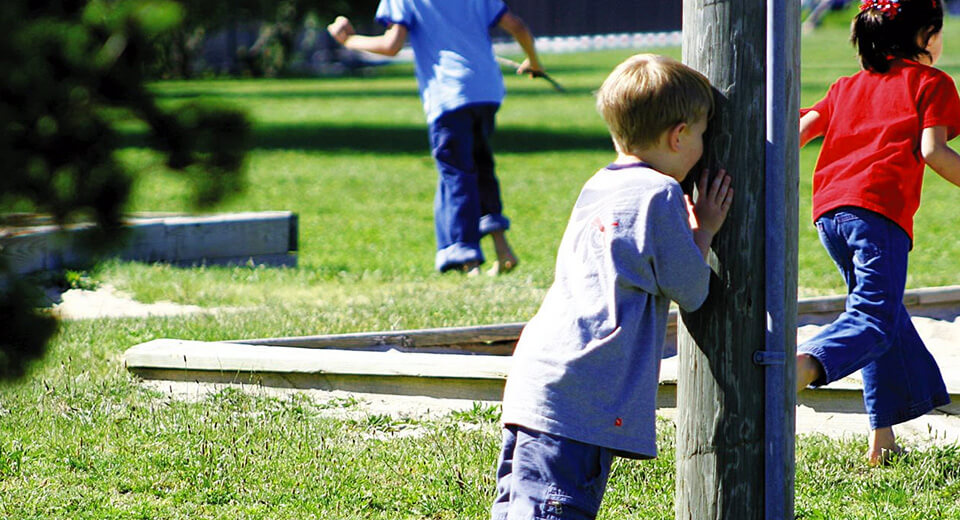
“Pryatki” is the most popular Russian children game that is exciting, active and fun. You can play this game with a friend, but if you have a team it is even more fun. First, you choose a lead player (it)who turns the face to the wall and closes the eyes. While the lead player (it) counts with the eyes closed, other players hide, after that the lead player starts to look for them. The player who is found first becomes the next lead player.
“Ladushki”

“Ladushki” is a game popular with small children. The aim of the game was to keep the child interested telling him funny poems, moving your head, and clapping hands. The game helps develop hand fine motor skills, coordination, and it teaches basic communication skills.
We hope you’ve liked the article, and you’ve learned something new about the games invented by Russian people. Most probably, you’ve already played one of the games we talked about. If so, you can leave your comment below!
Students can apply for the following study programs:
You may be interested
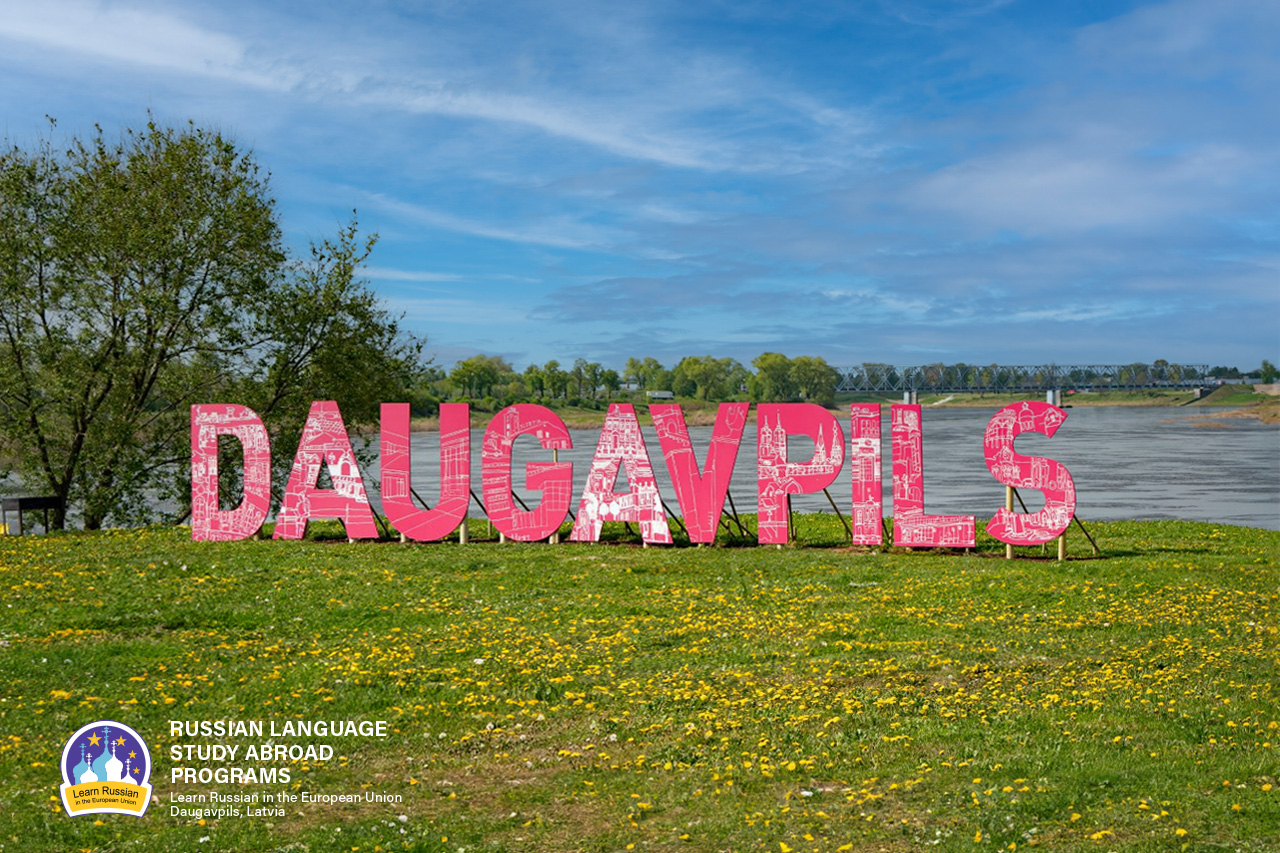
Why do people speak Russian in Daugavpils?
As it seems to us, Daugavpils is the best place to learn Russian now, because our city is situated in the EU and NATO, but at the same time 90% of the city’s population speak Russian at home.
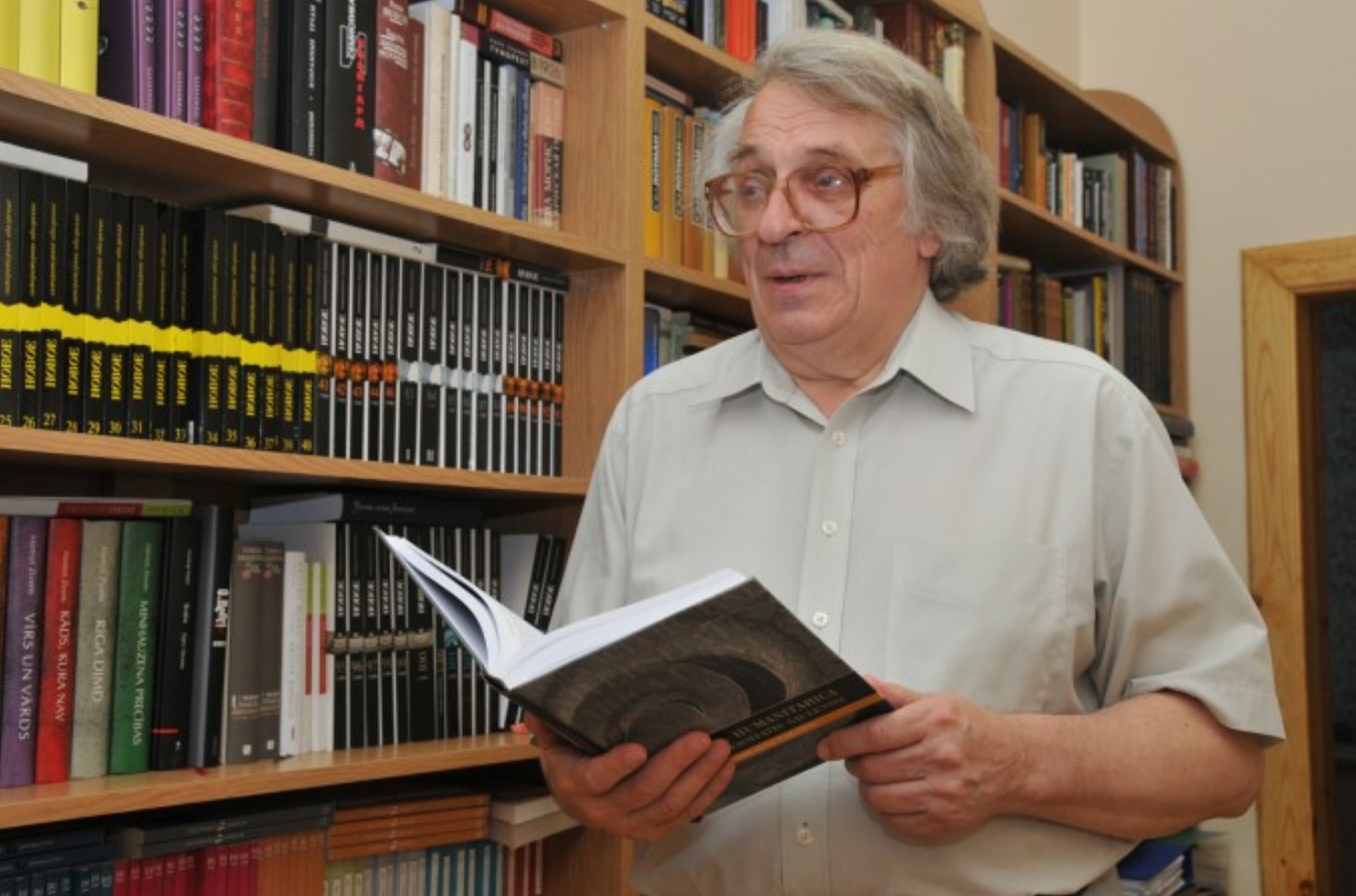
ЭТЮД О ДВИНСКЕ
Etude on Dvinsk by F.Fedorov
The Baltic region is one of the most catastrophe prone regions of the 2nd millennium, especially its second part; it is the centre of attraction of ‘geopolitical’ interests of the European world. Probably the most tragic fate has befallen to the eastern part of the present Latvia and its multi-titled town of Dinaburg – Dvinsk – Daugavpils. During its 730 years long history, the town went through five rather autonomous periods of development, five different lives (German, Polish, Russian, Latvian, Soviet), and at the beginning of the 1990s it entered into the 6th period.
The history of Dinaburg – Dvinsk – Daugavpils is the history of five attempts by the town to begin its life anew; and this is determined not only by the fact that the town was four times burned down and had to start life from scratch, but first and foremost because each of these periods was characterized by a total change of ethnos and the socio-cultural field.
The present article deals with the cultural space of the town in one of the most efficient periods of its development – from the 1860s till World War I.






